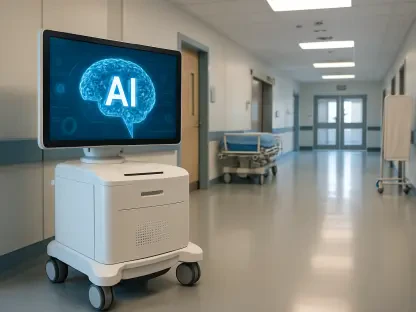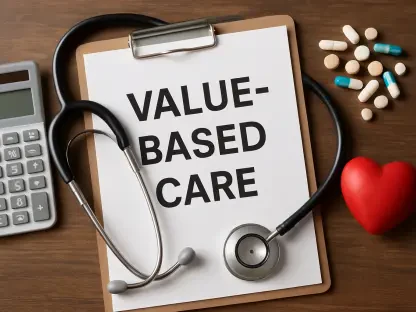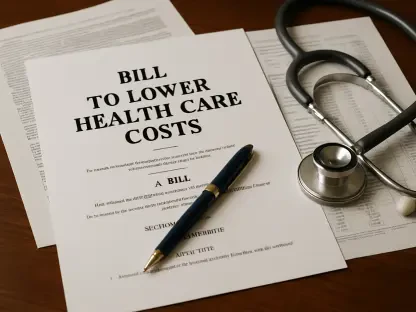Healthcare technology plays a pivotal role in the modern medical landscape, contributing significantly to accurate diagnoses and effective treatments. To ensure the reliability and safety of these technologies, it is imperative that healthcare professionals adhere to international guidelines recommending updates and maintenance every ten years. This article delves into the importance of these practices, presenting structured guidelines established by healthcare authorities and industry organizations.
Importance of Regular Updates
Guidelines for Equipment Replacement
To maintain the effectiveness and safety of healthcare technology, international standards recommend replacing equipment every ten years. Adhering to these guidelines is essential for ensuring that medical devices remain current with the latest advancements in technology. Over time, medical equipment can become obsolete, leading to inaccurate diagnoses and reduced treatment effectiveness. Replacing outdated technology with newer models is crucial not only for sustaining high-quality care but also for integrating cutting-edge innovations that can further enhance medical outcomes.
These guidelines emphasize the need for healthcare institutions to plan strategically for periodic equipment replacement. This proactive approach allows for timely upgrades that align with technological progress while simultaneously minimizing risks associated with outdated machinery. Additionally, following these international standards fosters a reliable and safe environment for both patients and healthcare professionals. By maintaining up-to-date technology, healthcare facilities can ensure they deliver the highest standard of care, mitigate the dangers associated with malfunctioning equipment, and optimize the overall performance of their medical infrastructure.
Role in Diagnoses and Treatments
Keeping healthcare technology consistently updated plays a vital role in improving diagnostic accuracy and treatment efficacy. Advanced medical technologies provide healthcare professionals with precise and reliable tools to detect and manage various health conditions. When technology lags, diagnostic errors can increase, adversely impacting patient outcomes and potentially endangering lives. Regular updates ensure that healthcare equipment integrates the latest features and improvements, driving more accurate and timely diagnostics. Consequently, patients receive more effective treatments based on precise data, and healthcare teams can make better-informed decisions.
Moreover, regularly updated technology enhances the overall safety of healthcare environments. Outdated equipment is prone to unforeseen failures and might not meet contemporary safety standards, creating risks for both patients and medical staff. Advanced surveillance and monitoring systems, which are part of modern healthcare technology, help in early detection of equipment issues and provide preventive measures to avoid accidents. Keeping technology current is an essential component of fostering safe and efficient healthcare facilities capable of providing top-tier service and safeguarding patient health.
Comprehensive Maintenance Practices
Guide to Good Practices
The Spanish Federation of Healthcare Technology Companies (Fenin) has introduced an essential resource—the Guide to Good Practices for Healthcare Technology Maintenance. This guide, supported by the European Coordination Committee for Radiology, Electromedicine, and Healthcare Technologies (Cocir), lays out comprehensive recommendations for maintaining the integrity and functionality of medical equipment throughout its lifecycle. It targets various stakeholders, including healthcare companies, hospitals, and technical services, offering structured practices for installation, maintenance, upgrades, and retirement of medical devices.
The guide advocates for systematic and quality maintenance as a fundamental aspect of extending the functional life and maximizing the value of healthcare technology. Ensuring that equipment receives consistent and expert care throughout its lifecycle not only enhances performance but also prevents premature obsolescence. Detailed protocols for technical oversight, guidelines on the frequency of inspections, and criteria for selecting reliable suppliers are integral components of the guide. Adhering to these best practices helps in maintaining safety standards, improving operational efficiency, and ensuring the continuous delivery of high-quality healthcare services.
Lifecycle Phases Covered
The lifecycle of medical equipment encompasses several phases: installation, routine maintenance, periodic upgrades, and final retirement. The Guide to Good Practices articulates detailed processes and best practices for each of these stages to ensure that healthcare technology remains safe and efficient. During installation, attention to detail is paramount—correct setup by trained professionals prevents initial faults and lays the groundwork for optimal performance. Routine maintenance, involving regular checks and timely repairs, safeguards continuous operation and mitigates the risk of unexpected breakdowns.
Periodic upgrades are essential to integrate new technological advancements and improve existing functionalities. This phase involves not only software updates but also hardware enhancements that can significantly extend the equipment’s lifespan and service potential. As medical technology nears the end of its lifecycle, the guide emphasizes the importance of orderly retirement procedures. Planning for the decommissioning of old equipment ensures a seamless transition to newer models and prevents disruption in medical services. Additionally, maintaining records of equipment history helps in optimizing future purchases and establishing a reliable maintenance routine that adheres to international standards.
Benefits of Quality Maintenance
Ensuring Durability and High Performance
Quality maintenance is a cornerstone in ensuring the durability and high performance of medical technologies. Trusted providers specializing in healthcare technology maintenance play a critical role in keeping equipment in optimal condition. Their expertise in managing routine and preventive maintenance tasks ensures that devices function correctly and efficiently, reducing downtime and enhancing their operational lifespan. A robust maintenance schedule includes regular inspections, timely repairs, and systematic updates, all of which contribute to preserving the equipment’s integrity and performance.
Furthermore, partnering with qualified maintenance providers guarantees compliance with safety standards and regulatory requirements. These professionals are adept at identifying potential issues before they escalate, implementing necessary corrections, and maintaining a meticulous service record. Consistent maintenance not only minimizes risks but also improves the accuracy and reliability of medical devices. In turn, healthcare facilities benefit from uninterrupted service delivery, improved patient outcomes, and optimized resource management. Ensuring the durability and high performance of medical technologies through quality maintenance is vital for maintaining a high standard of care.
Economic and Environmental Sustainability
Proper maintenance practices extend beyond improving equipment performance; they also contribute to the economic and environmental sustainability of healthcare facilities. Effective upkeep prevents premature equipment failure, minimizing the need for costly replacements and allowing facilities to allocate resources efficiently. This economic advantage is compounded by reduced operational disruptions and enhanced patient care quality. Additionally, sustained performance through quality maintenance aligns with broader sustainability goals, promoting the use of medical devices for their full lifespan and reducing waste.
From an environmental standpoint, meticulous maintenance practices support the principles of sustainability by maximizing the utility of existing equipment and minimizing the environmental impact of manufacturing new devices. This approach aligns healthcare operations with eco-friendly practices, promoting responsible resource management. Recycling and reusing medical equipment materials at the end of their lifecycle further embody these principles, contributing to a circular economy within the healthcare sector. By incorporating sustainable maintenance strategies, healthcare providers demonstrate a commitment to environmental stewardship and economic efficiency, reinforcing the integral role of sustainability in medical technology management.
Disposal of Medical Equipment
Accredited Recycling Channels
The disposal of medical equipment at the end of its lifecycle requires careful consideration to ensure environmental sustainability. The Guide to Good Practices for Healthcare Technology Maintenance underscores the importance of utilizing accredited recycling channels for the proper disposal of decommissioned medical devices. These channels help in safely dismantling equipment, recovering valuable materials, and preventing hazardous waste from polluting the environment. Accredited recycling processes are designed to comply with environmental regulations, ensuring that disposal methods are both safe and efficient.
Promoting the reutilization of valuable materials through accredited recycling fosters a responsible approach to resource management. Components such as metals, plastics, and electronics can often be repurposed, reducing the need for new raw materials and diminishing the environmental footprint of healthcare operations. This practice not only benefits the environment but also contributes to cost savings for healthcare facilities. By partnering with certified recycling providers, healthcare institutions can ensure that their disposal practices align with global sustainability standards, reflecting their dedication to responsible and eco-friendly solutions.
Sustainable Practices
Healthcare technology is crucial in today’s medical field, significantly improving the accuracy of diagnoses and the effectiveness of treatments. These technologies enhance patient care, making it essential for healthcare professionals to follow international guidelines for regular updates and maintenance. Experts recommend that these technologies be updated and maintained every ten years to ensure their reliability and safety. This article explores why these practices are so important and provides structured guidelines created by healthcare authorities and industry organizations. Keeping healthcare technology up-to-date not only aligns with these recommendations but also safeguards patient health, improves service quality, and ensures the smooth operation of medical facilities. Regular updates and maintenance help avoid potential issues that can arise from outdated systems, thus playing a crucial role in the overall quality of healthcare services. By adhering to these guidelines, professionals can better manage emerging health challenges, implementing the best practices to offer top-notch patient care.









